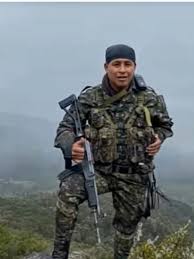
Tumbo Pacho: FARC Breakaway Faction Leader Killed in Colombia
Publication: Militant Leadership Monitor Volume: 16 Issue: 5
By:

Executive Summary:
- Tumbo Pacho, better known as “Camilo,” a hitman and mid-level commander in the FARC’s Dagoberto Ramos dissident faction, was found murdered in southwestern Colombia, likely a revenge killing linked to rivalries among FARC breakaway groups. Camilo’s death underscores the persistent, violent competition among post-FARC factions, despite the 2016 peace accord.
- Ongoing turf wars over drug trafficking routes continue to drive killings like Camilo’s, highlighting the Colombian state’s limited control in rural regions such as Cauca.
The Revolutionary Armed Forces of Colombia (Spanish: Fuerzas Armadas Revolucionarias de Colombia; FARC) recently saw the rise of a breakaway faction led by Dagoberto Ramos. This new force opposes the landmark peace agreement between FARC and the Colombian government. Reached in 2016, the agreement provides for the disarmament and reintegration of most FARC combatants, FARC’s evolution into a political party that would be guaranteed 10 seats in the country’s Congress, and investment in rural agriculture and development programs for neglected areas (European Union Institute for Security Studies, May 18, 2021). An attempt at enshrining the peace treaty by referendum failed due to a lack of popular support, with 50.2 percent of the Colombian population voting against the agreement. The process continued through more traditional lawmaking rather than risk another referendum, and the peace deal was ultimately signed (BBC, October 3, 2016). It was in this environment that the Dagoberto Ramos faction emerged.
One of the most feared Dagoberto Ramos faction members was hitman Tumbo Pacho, better known as “Camilo.” Camilo was from Páez, in the Cauca Department of southwestern Colombia. Cauca has been the focus of the Colombian Armed Forces’ operations against Dagoberto Ramos factional leaders (Fiscalía General de la Nación, August 31, 2024).
The Cauca Regional Indigenous Council had accused Camilo of assassinating Professor Emanuel José Oca Cuspián in San Andrés de Pisimbalá in the municipality of Inzá (El Liberal, November 6, 2024). Camilo’s motive was likely to undermine the Indigenous Guard, which defends local communities against Dagoberto Ramos’s faction’s influence. Cuspián was a member of the Indigenous Guard, which focused its efforts primarily on preventing the Dagoberto Ramos faction from trafficking drugs through villages in Cauca.
It is possible that Camilo’s role as a hitman and leader who ordered the assassination of Cuspián, among other victims, led to his eventual murder (Infobae, September 25). Camilo’s body was found alongside his bodyguard in Calota in northern Cauca with signs of torture, indicating revenge may have been a motive. At the same time, another FARC dissident group, Yair Bermúdez 57th Front (Frente 57), is suspected of being behind the killing of Camilo. This faction is a rival to the Dagoberto Ramos group, with the two fighting over territory in which to conduct illegal operations, like drug trafficking (Washington Office on Latin America, October 17, 2024).
Whatever the precise nature of Camilo’s killing, his case highlights the complicated and widespread nature of insurgent violence in Colombia. Even though FARC has officially laid down its weapons, there exist a multitude of dissident FARC factions still operating in the country, in addition to the Marxist National Liberation Army (Spanish: Ejército de Liberación Nacional), which has been in peace talks with the Colombia government but is yet to achieve any deal (German Institute for Global and Area Studies, September 23, 2024). The lucrative drug trafficking industry in Colombia sustains all these factions, while their rivalries catalyze the types of extreme violence and retribution reflected by the career and ultimate death of Camilo himself.



